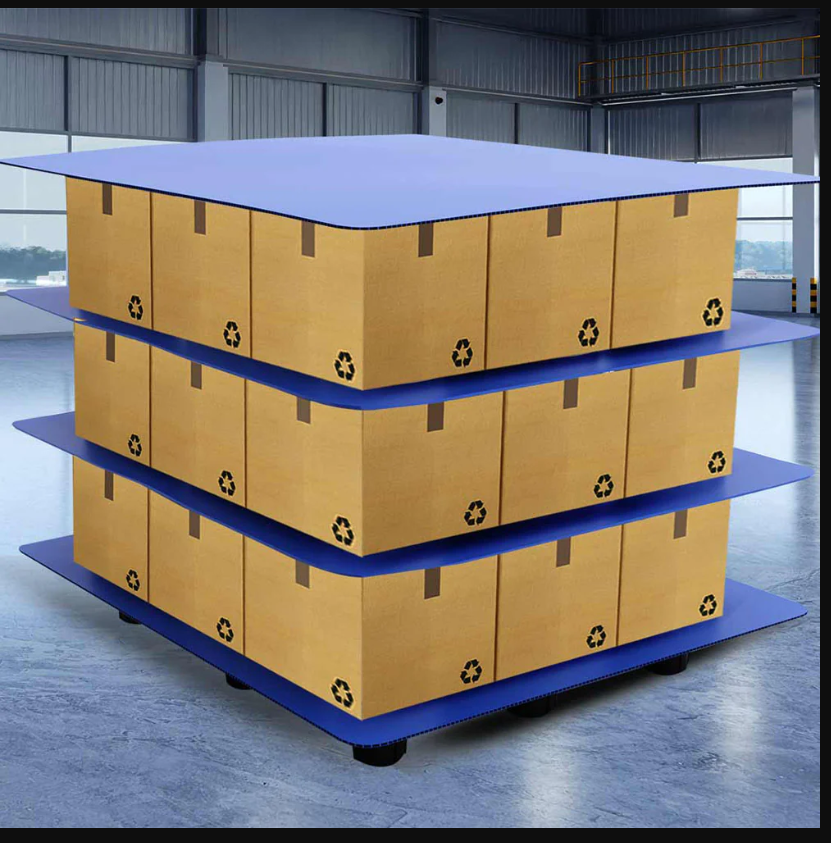In today’s fast-paced supply chain environment, efficient and sustainable packaging solutions are no longer a luxury—they are a necessity. Industries handling bulky, weighty items constantly seek smarter ways to store and transport their goods. Among the many innovations reshaping the logistics landscape, foldable containers for heavy duty goods have emerged as a game-changer. These containers combine strength, reusability, and space-saving capabilities—qualities that have made them indispensable across manufacturing, automotive, FMCG, and agriculture sectors.
The Evolution of Industrial Packaging
Traditionally, companies transporting heavy or voluminous products have relied on rigid wooden crates, metal bins, or single-use cardboard boxes. While these served the basic purpose of containment, they often came with drawbacks—excess weight, high shipping costs, poor durability, and limited reusability. Moreover, such packaging formats contributed significantly to material waste and logistics inefficiencies.
This paved the way for more adaptive, performance-driven solutions like foldable containers. Designed with modern logistics in mind, these containers can be collapsed when not in use, offering a major advantage over conventional packaging in terms of return logistics and storage optimization.
What Makes Foldable Containers Ideal for Heavy Duty Applications?
1. High Load-Bearing Capacity
At the heart of foldable containers for heavy duty goods lies their engineered structure. These containers are built using robust materials such as high-impact polypropylene or composite plastics reinforced for durability. This makes them capable of handling high loads—often up to hundreds of kilograms—without deformation or breakage.
Whether it’s automotive parts, metal components, agri-commodities, or industrial tools, these containers maintain structural integrity even under demanding conditions.
2. Space and Cost Efficiency
One of the standout benefits of foldable containers is their ability to collapse when empty. This reduces their volume significantly—often by as much as 70%—allowing more units to be stored or transported in the same space. For return logistics, this translates into fewer trips and lower transportation costs.
Warehousing costs are also optimized, as unused containers require minimal storage footprint.
3. Reusability and Sustainability
Unlike single-use packaging options, foldable containers are designed for long-term use. A single container can endure dozens—if not hundreds—of usage cycles with minimal wear and tear. This makes them an environmentally responsible choice, reducing the dependency on disposable packaging and lowering carbon footprints.
Moreover, many foldable containers are made from 100% recyclable plastic, further aligning with sustainability goals.
4. Customizable Features for Industry Needs
Modern foldable containers are far from one-size-fits-all. They can be tailored with features like:
- Locking lids or clasps for secure transportation
- Ventilation holes for perishable items
- Label holders or RFID integration for easy tracking
- Stackability for better space management
- Ergonomic handles for easier manual handling
These customizations enhance usability across diverse sectors, ensuring that the packaging solution fits the product—not the other way around.
Key Industries Benefiting from Foldable Containers
📦 Automotive
The automotive industry regularly handles bulky parts—engine blocks, bumpers, panels—that require protective, strong containers. Foldable units help streamline part movement across assembly lines and suppliers, reducing packaging waste and improving line-side efficiency.
🍎 Agriculture
Perishable produce and agri-inputs benefit from breathable, stackable foldable containers. These keep items fresh during transit while also conserving storage space in farm warehouses or distribution centers.
🏗️ Heavy Machinery and Engineering
Machinery parts and industrial components are often irregularly shaped and extremely heavy. Foldable containers, with their rigid frames and tailored interiors, provide secure handling and safeguard parts from damage.
🏭 Manufacturing and Warehousing
General manufacturing facilities rely on these containers for internal material movement and export packaging. The ability to collapse them post-use reduces clutter on factory floors and improves warehouse utilization.
Economic and Environmental Impact
Over the long term, foldable containers for heavy duty goods present a compelling value proposition. Businesses benefit from:
- Lower total cost of ownership: Due to their extended lifecycle and reduced return logistics.
- Waste reduction: A drop in the use of disposable wooden pallets, cardboard, and shrink wrap.
- Improved worker safety: With ergonomic designs and smooth handling features.
Furthermore, companies committed to environmental responsibility can report measurable reductions in packaging waste, supporting ESG (Environmental, Social, Governance) compliance.
How to Choose the Right Foldable Container?
When selecting a foldable container, businesses should evaluate:
- Weight capacity required for their goods
- Compatibility with existing logistics systems (e.g., forklifts, racking)
- Durability in extreme conditions (humidity, UV exposure, rough handling)
- Ease of assembly and collapse
- Customization potential for branding or operational needs
Working with established manufacturers who offer comprehensive testing and certifications ensures that containers meet both operational and safety standards.
The Future of Foldable Containers in Industrial Supply Chains
As supply chains evolve to become leaner and greener, foldable packaging will play an even greater role. Smart containers with IoT-enabled tracking, anti-theft mechanisms, and modular designs are on the horizon.
Incorporating these containers into logistics operations isn’t just about saving costs—it’s a strategic move toward resilience, efficiency, and sustainability.
If you are looking for robust, reusable, and space-saving packaging, foldable containers for heavy duty goods might be the answer. Their versatile design and long-term benefits make them one of the most valuable assets in any industrial packaging toolkit.
Conclusion
The adoption of foldable containers for heavy duty goods marks a shift in how industries view packaging—not as a disposable necessity but as a durable asset. With the right design, materials, and usage strategy, these containers can significantly elevate the efficiency, cost-effectiveness, and sustainability of any supply chain.
As industries face mounting pressures to innovate and reduce waste, the humble foldable container is quietly revolutionizing how heavy-duty goods are moved, stored, and managed—one smart fold at a time.





Comments